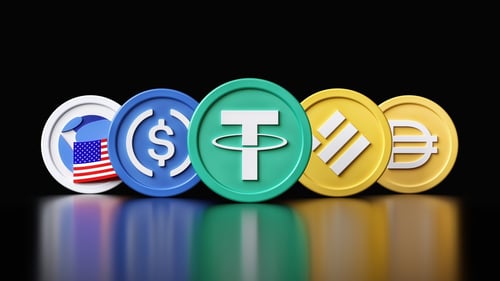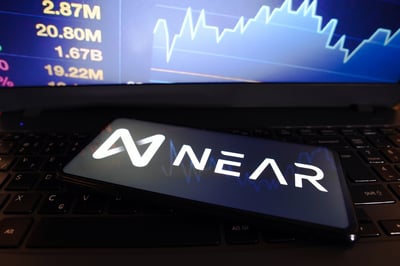The emergence of decentralized exchanges, providing a non-custodial way to swap between tokens, has been a godsend for crypto holders. It means it’s possible to hedge against a market downturn by swapping into stablecoins, for example, without losing custody of your coins. And conversely, it allows traders to keep their power dry by holding stablecoins and waiting for the opportune moment to swap back into ETH.
Useful as the ability to swap stablecoins onchain may be, traders are now overwhelmed with options. A proliferation of DEXes, AMMs, liquidity pools, and onchain order books, coupled with an explosion in EVM chains, risks causing choice paralysis. While on cursory glance one AMM may look much the same as another, on closer inspection you’ll find some key differences – particularly when it comes to pricing.
Due to the way onchain liquidity pools are designed, and the routes by which smart contracts draw their liquidity, pricing can differ significantly between DEXes. As a result, it’s imperative to pick the most price-efficient DEX on which to trade. Doing so could save you thousands of dollars a year depending on your trading size, and multiples more if you’re a power user. Here’s how to find the cheapest option when trading stables onchain.
Know Your DEXs
Let’s start by discussing strategies when trading stablecoins on the Ethereum mainnet. Unfortunately due to its network fees, Ethereum is the most expensive onchain environment for executing trades. Due to its unrivaled liquidity, however, and economic opportunities, it’s where much of the action takes place.
A simple rule of thumb for gauging how the leading DEXes compare in terms of price efficiency is to line up a comparable swap in each. For instance, set an ETH-USDT swap of medium size – say 1 ETH – in the following DEXes and aggregators:
While the best pricing for other token pairs may vary from platform to platform, ETH-USDT provides a reference rate that can be used to compare DEXes side by side. In doing so, you’ll note that the output quoted differs significantly between DEXes in many cases.
In composing this review, the cheapest DEX for making a 1 ETH swap proved to be Orion, followed by 1inch. Uniswap, meanwhile, proved the most expensive. This is despite these platforms often drawing liquidity from the same source: as a liquidity aggregator, Orion sources liquidity from multiple protocols including Uniswap. Because it adds no fees of its own, Orion is typically able to provide a better quote.
In some cases, the difference you’re quoted between DEXes may be a dollar or less; hardly worth quibbling. At other times, though, the variance can be as great as $30 for a 1 ETH swap. Over the course of a year, 50 such onchain trades would equate to a price differential of $1,500. For larger traders, that saving could well run into five figures.
Know Your Networks
It pays to know the main DEXes on the network you’re using, and to have an idea of how they rank in terms of price efficiency. But it also pays to know your networks and to be willing to move funds to them to capitalize on better pricing. On L2s such as Arbitrum and Optimism, fees for a typical swap are multiples lower than on Ethereum; expect to pay less than a dollar per trade, versus $20 on mainnet.
The reduction in network fees alone can be sufficient to justify moving your money to L2, despite the comparatively low liquidity compared to Ethereum. It’s not always possible to do everything on a secondary chain, however, particularly if you’re seeking out particular tokens that are native to Ethereum.
One solution is to place some of your funds on L2 and use this tranche of your portfolio solely for swapping in and out of stablecoins. This will allow you to make use of L2’s lower fee environment for quickly hedging or seeking sanctuary in stablecoins when the market turns volatile. As a result, you won’t be hostage to exorbitant fees on Ethereum, which tend to spike when the market peaks or troughs.
Know Your DEX Settings
The final tip for saving money on stablecoin swaps concerns the wallet and DEX settings at your disposal. Even if you are obliged to swap stables on Ethereum, you can still make significant savings by optimizing the settings at your disposal. In the DEX or aggregator you’re using, ensure slippage is set to 0.5% or lower. Unless you’re trading an exotic asset, there’s unlikely to be high slippage when trading in or out of a stablecoin.
Next, check the gas price quoted by your wallet against the latest network fees as provided by a gas checking service such as Etherscan. Many wallets feature a sub-optimal gas calculator, which can result in users paying more than they should in fees. In most cases, there’s nothing to gain by setting a priority network fee to trade in or out of a stablecoin. Pay less and you’ll find that in the vast majority of cases, your transaction goes through just fine.
Identify the most price-efficient DEXes, optimize your fee settings, and try to avoid trading during peak times. If you can achieve that, you’ll save money every time you trade.
 Nikolas Sargeant
Nikolas Sargeant





